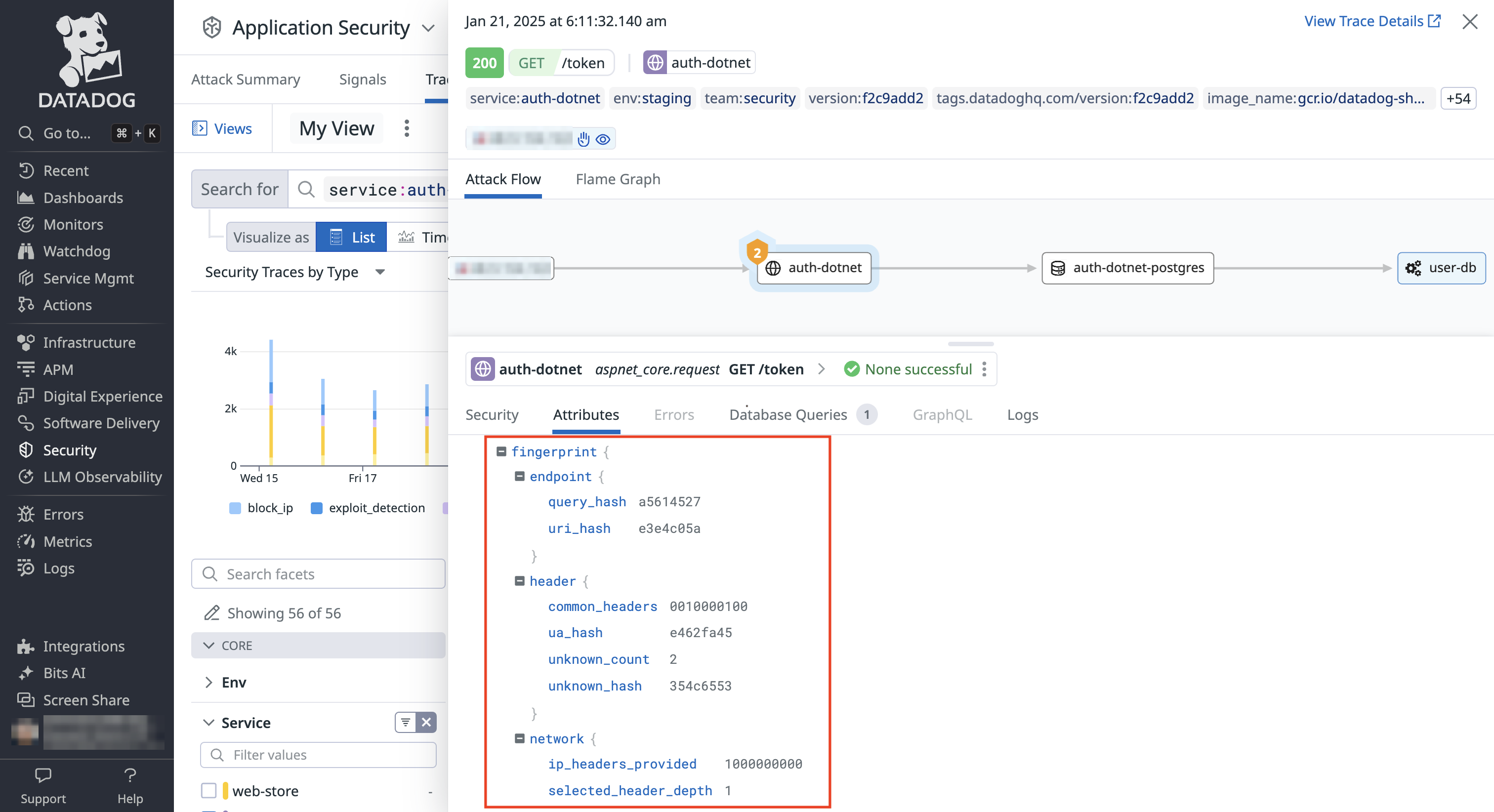- 重要な情報
- はじめに
- 用語集
- Standard Attributes
- ガイド
- インテグレーション
- エージェント
- OpenTelemetry
- 開発者
- Administrator's Guide
- API
- Partners
- DDSQL Reference
- モバイルアプリケーション
- CoScreen
- CoTerm
- Remote Configuration
- Cloudcraft
- アプリ内
- ダッシュボード
- ノートブック
- DDSQL Editor
- Reference Tables
- Sheets
- Watchdog
- アラート設定
- メトリクス
- Bits AI
- Internal Developer Portal
- Error Tracking
- Change Tracking
- Service Management
- Actions & Remediations
- インフラストラクチャー
- Cloudcraft
- Resource Catalog
- ユニバーサル サービス モニタリング
- Hosts
- コンテナ
- Processes
- サーバーレス
- ネットワークモニタリング
- Cloud Cost
- アプリケーションパフォーマンス
- APM
- Continuous Profiler
- データベース モニタリング
- Data Streams Monitoring
- Data Jobs Monitoring
- Data Observability
- Digital Experience
- RUM & セッションリプレイ
- Synthetic モニタリング
- Continuous Testing
- Product Analytics
- Software Delivery
- CI Visibility (CI/CDの可視化)
- CD Visibility
- Deployment Gates
- Test Visibility
- Code Coverage
- Quality Gates
- DORA Metrics
- Feature Flags
- セキュリティ
- セキュリティの概要
- Cloud SIEM
- Code Security
- クラウド セキュリティ マネジメント
- Application Security Management
- Workload Protection
- Sensitive Data Scanner
- AI Observability
- ログ管理
- Observability Pipelines(観測データの制御)
- ログ管理
- CloudPrem
- 管理
攻撃者フィンガープリント
This product is not supported for your selected Datadog site. ().
このトピックでは、IP アドレスだけに頼らず攻撃者を識別するための Datadog Attacker Fingerprint 機能について説明します。
概要
Datadog Attacker Fingerprint は、IP アドレスを超えた手掛かりで攻撃者を識別します。サービスで App and API Protection (AAP) を有効にすると、攻撃やログイン試行時に Datadog の攻撃者フィンガープリントが自動的に算出され、トレースに付与されます。
Datadog の攻撃者フィンガープリントは、次のフラグメントで構成されます:
- エンドポイント識別子
- セッション識別子
- ヘッダー識別子
- ネットワーク識別子
各フラグメントは、特定のヘッダーやクエリ / ボディのフィールドを参照し、Cookie 値やクエリ パラメータをハッシュ化することで、リクエストの特徴を特定します。
攻撃者フィンガープリント フラグメントの詳細
エンドポイント識別子
エンドポイント識別子フラグメントは、特定のエンドポイントと、その呼び出しに使われたパラメータに関する情報を提供します。このフラグメントで使用する情報は次のとおりです:
- HTTP メソッド
- リクエスト URI のハッシュ
- クエリ パラメータ フィールドのハッシュ
- ボディ フィールドのハッシュ
セッション識別子
セッション識別子フラグメントは、セッション情報および認証済みかどうかに基づいてユーザーを追跡します。このフラグメントで使用する情報は次のとおりです:
- ユーザー ID のハッシュ
- Cookie フィールドのハッシュ
- Cookie 値のハッシュ
- セッション ID のハッシュ
これらのフィールドを 1 つも取得できない場合は、有用な情報にならないため、このフラグメントは省略されます。
ヘッダー識別子
ヘッダー識別子フラグメントは、リクエストで使用されたヘッダーに関する情報を提供します。このフラグメントでは次の情報を使用します:
- 既知のヘッダーの有無: Referer、Connection、Accept-Encoding など
- ユーザー エージェントのハッシュ
- 未知のヘッダー数
- 未知のヘッダーのハッシュ。未知のヘッダー一覧からは、すべての XFF ヘッダー、Cookie、x-datadog ヘッダーを除外します。
ネットワーク識別子
ネットワーク識別子フラグメントは、リクエストのネットワーク部分に関する情報を提供します。このフラグメントでは次の情報を使用します:
- 呼び出し元がクライアント IP を判定するために参照する XFF ヘッダー内の IP 数
- 既知の XFF ヘッダーがあるかどうか
攻撃者フィンガープリントの使い方
目的の fingerprint フィールドで絞り込むことで、フラグメントを AAP Traces explorer のフィルターとして利用できます。例: @appsec.fingerprint.header.ua_hash:e462fa45 を指定すると、同じユーザー エージェントのハッシュを持つリクエストだけに絞り込めます。
攻撃者フィンガープリントは Attacker Clustering 機能で使用されます。トラフィックのかなりの割合が同じフィンガープリント属性を示す場合、Attacker Clustering で共通の攻撃属性があるものとして表示されます。
参考資料
お役に立つドキュメント、リンクや記事:

